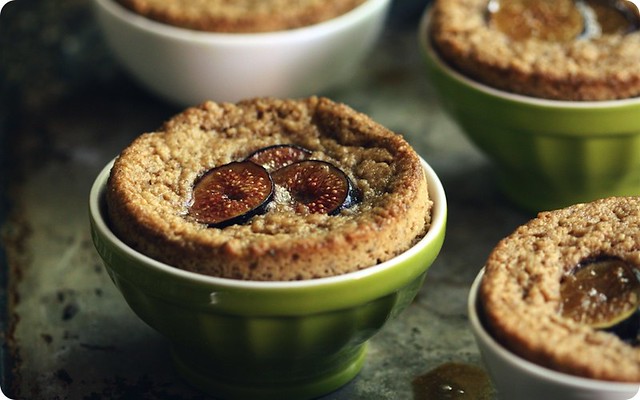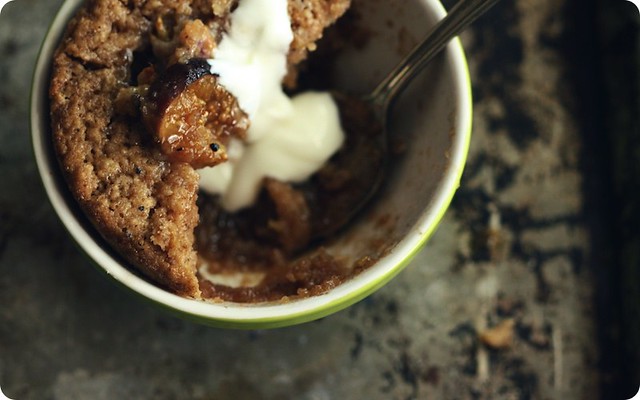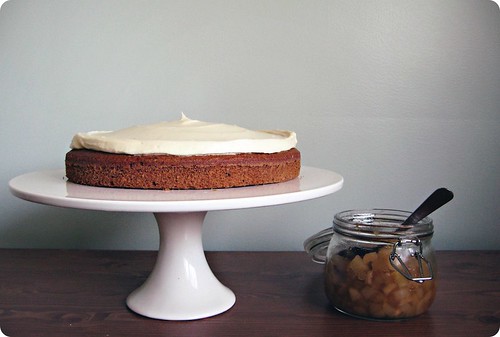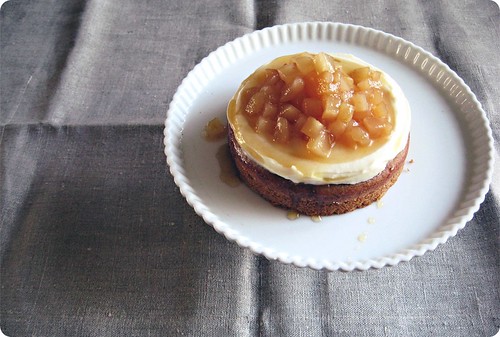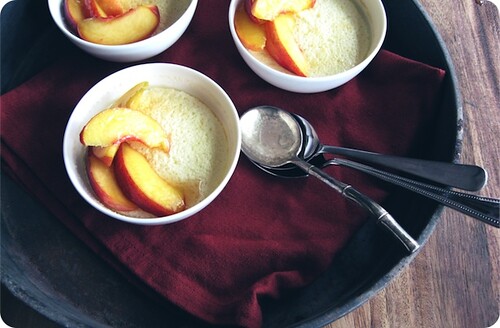Without edge
 Tuesday, October 5, 2010 at 10:41PM
Tuesday, October 5, 2010 at 10:41PM There is a quiet gentleness to the word pudding, or even better its diminutive form, pud. I’m considering it in its larger scope, the loosely-defined notion of desserts in general, not the narrow view of custard alone.
Pudding has a welcoming, nursery-school comfort to its sound. Placing the phrase “Caramel Self-Saucing” as a prefix only serves to amplify that quality.
However, for all their soothing reputation, these petite darlings gave me a world of trouble. Well, not these ones, as these ones right here are the ones that were made after the hair pulling. After the whispered mutterings punctuated by half-swallowed curses. These ones were the ones that reminded me when made well, a proper pud is your bestest bud on an autumn afternoon. These are the ones that made me do a happy dance in my kitchen, right there by the stove.
What was it that caused all my trouble? Only this - I wanted these cakes to be darned special for all their humbleness. I wanted them pleasantly solid and touched with caramel, and perfectly spoonable.
Before I get into the account of my failure, it would be remiss to jaunt merrily ahead when I've not given Self-Saucing Puddings the introduction they're due.
To make this miraculous invention, you stir together a simple batter that's spooned into a buttered baking dish. Then your pour a watery syrup, in this instance a caramel one, over top the uncooked cake. Yes, over top. It looks a right mess, and you're thinking you've ruined the whole recipe, because who is going to want to eat something that looks like a sludge-covered bog, and gracious, will your friends ever even want to come over again after you serve them swamp pudding? Steel yourself and pop that dish in the oven.
Take a deep breath and uncross your fingers. You needn't worry. Promise.
The cake will take care of itself. As it bakes, the modest batter grows, rising above the murky darkness of the liquid. And that syrup, so unceremoniously displaced, will sink and ooze its way down, around and through the cake, ending up as a thickened puddle at the bottom of the dish.
And, as someone smart recently said to me, "what could be better than finding warm caramel on the bottom of a yummy cake?" Good question.
Now suitably lulled by that blissful notion, here is the story of my failures.
My first go gave me a cake that was perfectly serviceable. Its top had a light sugar glaze that was crystalized and pretty - a sugared crust created by the syrup as it sank. But the caramel was where it faltered - I'd pulled muscovado from the pantry, craving its burnt-toffee sweetness and the suggestion of treacle. What I ended up with was far more than a suggestion, it was a manifesto yelled from the depths of my bowl. It was so sugary it hurt.
I tried again. This time with dark brown sugar and a greater ratio of water to sugar and less syrup on the whole.
Then the cake. Serviceable wasn't enough. I was going for better than that. I'd put roasted walnuts in the first try, which gave a rough crumb that reminded me of tweed coats and cable knit sweaters. This time around, as I was melting the butter, it hit me - let it brown. So I did, watching with far more glee than is probably normal for one to feel over a saucepan of bubbling butter, as it went from buttercup to deeper golden, and finally touched with umber.
The aromatic butter was transformative. The cake was given voice against the caramel, in harmonious tandem.
The third try was a minor tweak - seeds from a vanilla bean. It is a sleepy spice, with a murmured warmth that is without edge. It's the accent of a hushed baritone. The duet turned a trio and was improved by the collaboration.
That was the charm, as they say. For here was the pud I'd wanted, one that lived up to its name.
Caramel Self-Saucing Walnut Puddings
Ingredients
For the syrup
1/2 cup brown sugar, lightly packed
2 tablespoons unsalted butter
1 cup water
1/8 teaspoon kosher salt
For the cake
6 tablespoons unsalted butter
1 cup all-purpose flour
1 teaspoon baking powder
1/4 teaspoon kosher salt
4 ounces walnuts, toasted and ground into meal with a food processor
2 eggs, lightly beaten
1/2 cup brown sugar, lightly packed
1/4 cup milk
Seeds scraped from one vanilla bean
4-6 small fresh figs, sliced (optional)
Lightly-whipped cream to serve
Start with the syrup. In a small saucepan, over medium heat, melt the butter. Once liquid, stir in the brown sugar to combine along with the salt. Pour in the water and bring to a boil, then reduce the heat to low and simmer for five minutes. Set aside.
Preheat an oven to 325°F (160°C).
In a saucepan over medium heat, melt the 6 tablespoons butter. Cook until the butter begins to brown and smell toasty, around 5 minutes. Set aside to cool, stirring occasionally - it will continue to darken as it sits.
In a small bowl, whisk together the flour, baking powder and salt. In another bowl, stir together the browned butter, walnut meal, eggs, brown sugar, milk and seeds from the vanilla bean. Once combined, stir in the dry ingredients until just blended. Do not overmix.
Divide the pudding mixture between 6 x 1-cup capacity greased oven-safe dishes. Top with sliced figs.
Give the syrup a stir if needed, then carefully pour some over the back of a spoon onto each of the cakes, trying not to disturb the figs. The cakes will look a mess, but don't worry. Bake in the preheated oven until the cake is puffed and set, with a dry, glistening crust and you can see the syrup bubbling around the edge of the dishes, around 30 minutes. Remove from the oven and cool for 5 minutes before serving with the cream.
Makes 6.
















